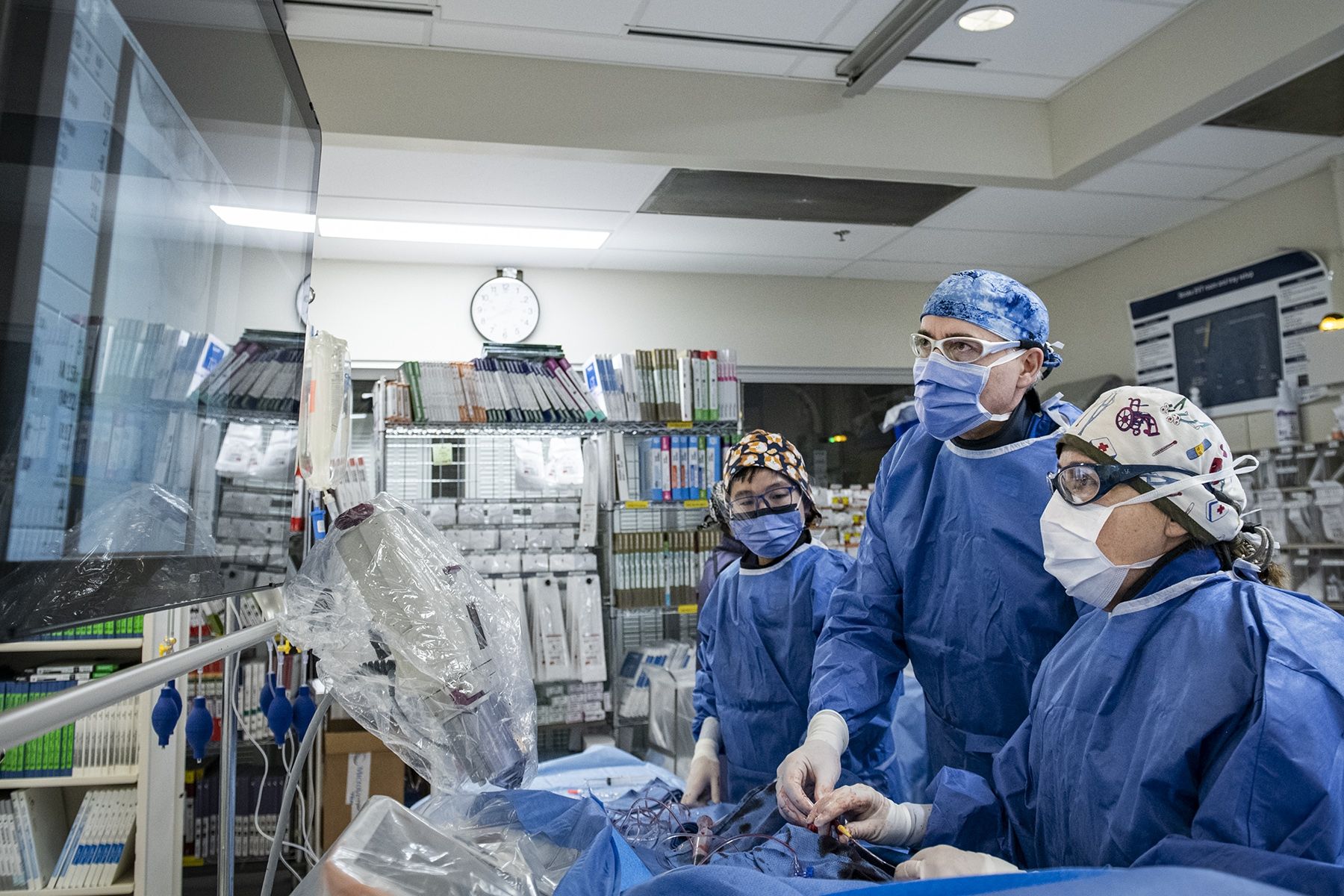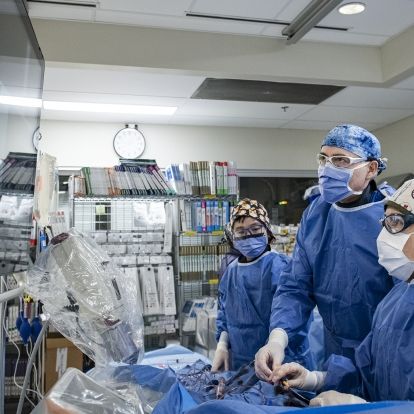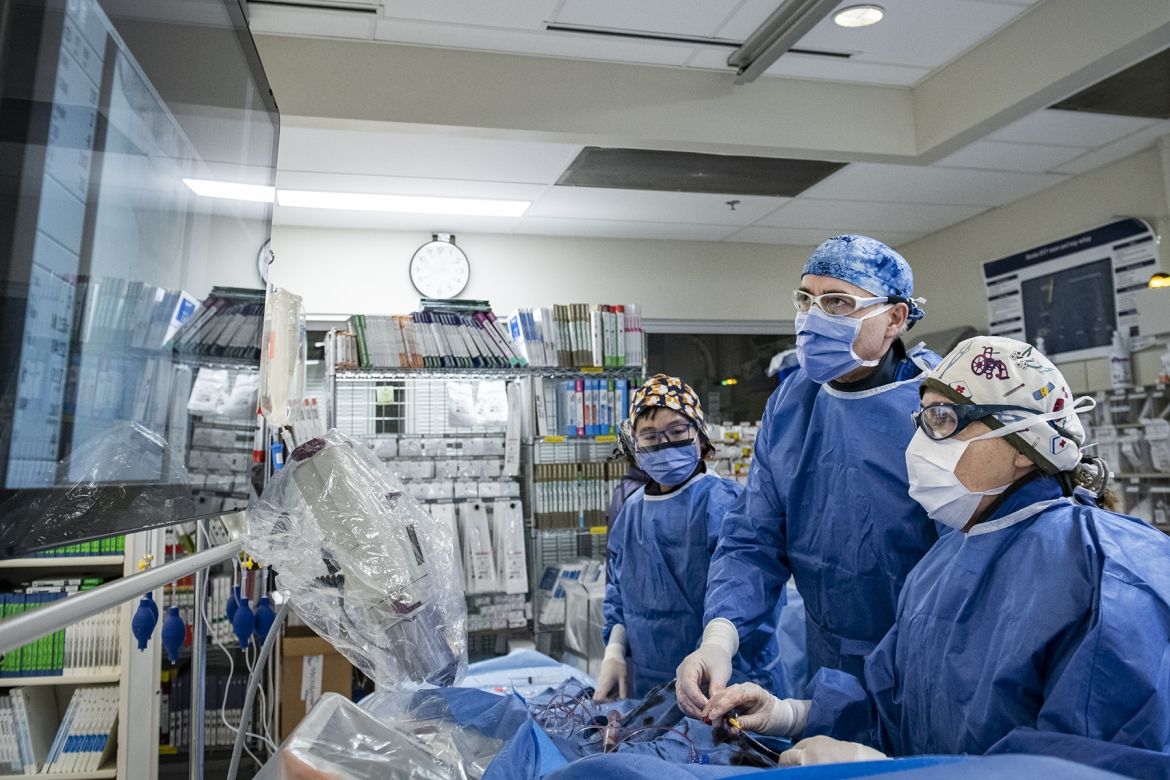
Nurturing her passion for caring, leading and learning, Dr. Donatella Tampieri with the KHSC Department of Diagnostic Radiology has improved patient outcomes by providing innovative services closer to home for patients living with a brain aneurysm.
Endovascular treatment of intracranial aneurysms using platinum coils was developed in the late ‘80s by Dr. Guido Guglielmi at the University of Los Angeles in California. Since that time his technique has evolved and currently represents the preferred way of treatment of most intracranial aneurysms over the classical surgical technique.
“The terminology is now referred to as platinum detachable coils, but basically the principle is the same as Dr Guglielmi developed,” said Dr. Tampieri. “I did my first animal lab coiling with him in UCLA in 1993. We now have available numerous other devices such as stent, flow diversion, balloons and flow disruption tools to treat all sorts of aneurysms which could not be treated easily just with platinum coil.”
The program did not exist at KHSC since the expertise was not available before the arrival of Dr. Tampieri, a fully trained diagnostic and interventional neuroradiologist.
“Ultimately you need a comprehensive team to achieve success, and the team is usually much larger than what the patient see with her or his own eyes,” says Dr. Tampieri. “For example, the Department of Radiology, Neurosurgery, Critical Care, Anesthesiology and others form a partnership in care and the care provided by neurosurgeons is key to ensuring this treatment succeeds.”
Since her recruitment at KHSC, with the support and help of the Department of Radiology, Neurosurgery and others, KHSC established the program and obtained the Ontario Ministry of Health designation as a coiling centre.
“Without this amazing facility in southeastern Ontario, I doubt that my outcome would have been as positive,” said coiling patient Terri-Lee Kelly. “If I had to go farther for care, my outcome may not have been the same. I received wonderful care at KHSC. Dr. Tampieri explained that the use of coils was an innovative procedure that had been put in place by her and her team and was a much less invasive technique than open conventional surgery.”
The endovascular treatment of aneurysms (coiling) is considered to be a much less invasive technique than open conventional surgery, since it does not require craniotomy. Long term randomised studies (ISAT) have demonstrated less morbidity and long term side effects with endovascular technique for ruptured aneurysms (i.e. less incidence of long term seizures), when compared with conventional surgery. In addition, endovascular treatment enables treatment of aneurysms in locations not accessible by conventional surgical treatment.
“Since my arrival at KHSC we have treated 42 patients,” says Dr. Tampieri. “Initially we have treated only ruptured aneurysms but the program will grow step by step and soon we will start to also treat un-ruptured aneurysms. These are aneurysms found accidentally which have the potential to bleed based on their location, size and shape. We estimate that when our program is fully mature we will treat approximately 30 to 45 cases per year.”
The impact of these advances can ripple through entire communities, in southeastern Ontario and beyond. At KHSC, it’s our mission to support our patients, families and each other throughout everyone’s individual and unique journey.
“Although I don’t remember the first few weeks, my family said they were treated with compassion and respect and my progress was conveyed to them in a timely manner,” said Terri-Lee Kelly. “COVID-19 made it impossible for my family to visit but the team kept them well informed and explained to them all the steps that were being taken for my recovery. I had amazing care and always felt that my recovery was of utmost importance to the team. I want to thank Dr. Tampieri and the KHSC team for giving me my life back.”
Gallery


XRay Technologist James Jung (L), Dr. Ben Mussari (centre) and Dr. Donatella Tampieri (R) perform The endovascular treatment of aneurysms (coiling).



